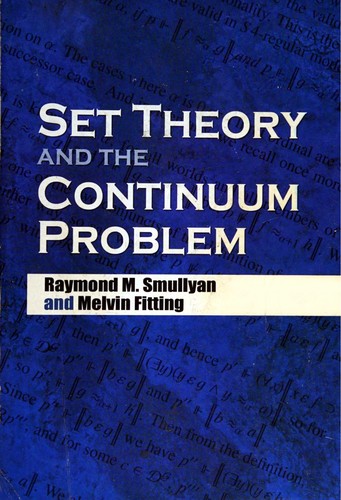336 pages
English language
Published 2010 by Dover Publications.

336 pages
English language
Published 2010 by Dover Publications.
A lucid, elegant, and complete survey of set theory, this volume is drawn from the authors' substantial teaching experience. The first of three parts focuses on axiomatic set theory. The second part explores the consistency of the continuum hypothesis, and the final section examines forcing and independence results. Part One's focus on axiomatic set theory features nine chapters that examine problems related to size comparisons between infinite sets, basics of class theory, and natural numbers. Additional topics include author Raymond Smullyan's double induction principle, super induction, ordinal numbers, order isomorphism and transfinite recursion, and the axiom of foundation and cardinals. The six chapters of Part Two address Mostowski-Shepherdson mappings, reflection principles, constructible sets and constructibility, and the continuum hypothesis. The text concludes with a seven-chapter exploration of forcing and independence results. This treatment is noteworthy for its clear explanations of highly technical proofs and its discussions of countability, uncountability, and …
A lucid, elegant, and complete survey of set theory, this volume is drawn from the authors' substantial teaching experience. The first of three parts focuses on axiomatic set theory. The second part explores the consistency of the continuum hypothesis, and the final section examines forcing and independence results. Part One's focus on axiomatic set theory features nine chapters that examine problems related to size comparisons between infinite sets, basics of class theory, and natural numbers. Additional topics include author Raymond Smullyan's double induction principle, super induction, ordinal numbers, order isomorphism and transfinite recursion, and the axiom of foundation and cardinals. The six chapters of Part Two address Mostowski-Shepherdson mappings, reflection principles, constructible sets and constructibility, and the continuum hypothesis. The text concludes with a seven-chapter exploration of forcing and independence results. This treatment is noteworthy for its clear explanations of highly technical proofs and its discussions of countability, uncountability, and mathematical induction, which are simultaneously charming for experts and understandable to graduate students of mathematics.